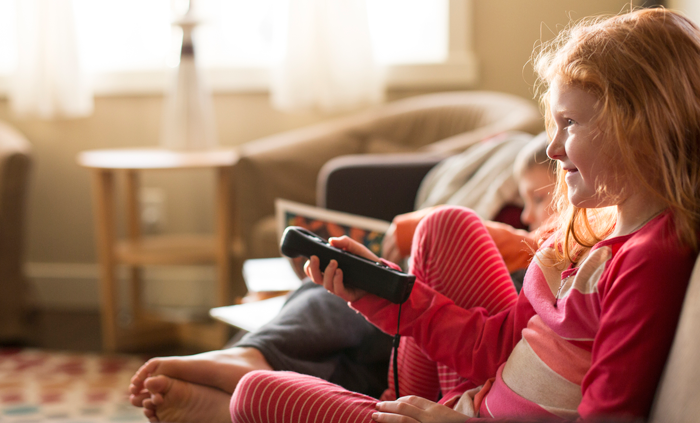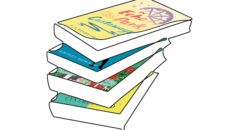Seeing an adoption plot played out on-screen—whether a new show or one featuring characters they already know and love—can be an effective and enjoyable way to help normalize adoption for children. Read reviews of five streamable television series for younger and older audiences below, then spark a conversation after you watch with the discussion questions for each show.
SHOWS FOR CHILDREN
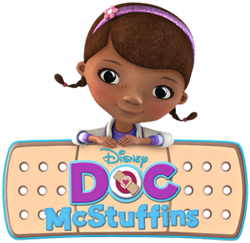 Doc McStuffins
Doc McStuffins
Disney Junior’s Doc McStuffins was already notable for its positive portrayal of an African-American girl and her family. “Doc,” the main character, aspires to be like her mom, a pediatrician, and takes care of all her toys. Then, last year, the animated series ran a five-episode storyline that centered on the McStuffins family adopting a baby. The episodes cover a range of fears and questions that young kids might have about adoption and new siblings, and do so with warmth, humor, and reassurance.
[Adoption at the Movies: Get the Conversation Started]
In the first episode, “Baby McStuffins,” Doc’s parents tell her and her brother, Donny, that they have a surprise—they will be adopting a baby. Doc is excited to be a big sister, but also nervous, wondering whether she will be up to the task. Her stuffed animal friends are supportive and help her get ready to assume the role. Doc’s parents assure her that the baby will be a full part of their forever family, and Doc and Donny express their excitement. Doc even says, “I love the new baby already.”
The second episode, “Runaway Love,” shows the concerns some children might have about gaining a new sibling through adoption. Donny wonders if his parents won’t love him as much once the baby comes. Anticipating that everyone will be “too busy to play with me,” he sets up a tent in the backyard. One of Doc’s toys, Lambie, also worries that they will be replaced by the baby. Donny’s parents find him and assure him, “The new baby will not replace you ever. We have enough love for all of you.” Doc assures Lambie, “I will always have enough love for you. You’ll always be my lamb.” A closing song proclaims, “I have plenty of love, can’t keep it to myself, and never running out.”
The McStuffins family prepares for the new baby in the third episode and, in the fourth, brings her home. Doc promises, “I’ll be your sister forever and longer.”
In the final episode, Doc’s parents are still trying to choose a name for their new child. They note that her birth mother loves the name Alana, since it’s her grandmother’s name, and so they decide to use that as the baby’s middle name. I was happy to see that Doc McStuffins acknowledges and incorporates the birth mother and her wishes.
[How to Connect with Your Teen at Family Movie Night]
As the baby joins the McStuffins family, a new baby toy, Lala, joins Doc and her stuffed animals. Lala worries that she won’t fit in, but Doc assures her, “Home is love and family. You’ll fit in; this is your home.”
Discussion Questions for Doc McStuffins
- Will Doc be able to love Lambie even after the new baby comes into her family?
- Why is Doc nervous about having a new baby in the home? Why is she excited about it?
- If you were Donny’s friend, what advice would you give him?
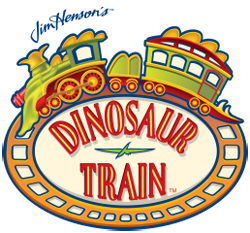 Dinosaur Train
Dinosaur Train
In this Jim Henson Company show, a family of Pteranodons adopts a Tyrannosaurus rex named Buddy. The story of how he joined his family, and their unquestioning acceptance of him, is mentioned in the theme song at the beginning of every episode:
But dear old Mrs. Pteranodon
said, “This is your family and I’m your mom.
We may be different, but we’re all creatures,
all dinosaurs have different features.”
A three-part episode, “Dinosaur Big City,” which kicked off the second season, explores Buddy’s adoption in greater depth.
Buddy notices that he is a different kind of creature (Pteranodons were actually large flying reptiles, not dinosaurs) than his family, and the only Tyrannosaurus in his neighborhood. He realizes that the differences will be particularly important when he is grown. His mother assures him that they will always be his family, but also acknowledges his need to understand what it means to be a Tyrannosaurus. A theropod (the class of dinosaurs that includes T-rex) convention is being held in a big city, and Buddy’s parents decide to take the family there on the Dinosaur Train so he can meet adult theropods.
Buddy’s adoptive family loves him and accepts him as one of their own, but also acknowledges his different origins and honors his need to know about it.
Discussion Questions for Dinosaur Train
- Why did Buddy want to go to the Dinosaur Big City?
- Why is it important for Buddy to know other Tyrannosauruses?
- The Pteranodons are Buddy’s family—how can you tell?
 Sesame Street
Sesame Street
This long-running children’s show launched with a commitment to diversity and has tackled a number of real-life topics over the years, including divorce, death, and missing a parent who is deployed by the military or who is incarcerated. In the show’s 37th season, which aired in 2006, one of the main characters adopts a baby.
Gina, a veterinarian, has decided to adopt a baby from Guatemala. Over the story arc, she discusses her adoption plans with her human and puppet neighbors on Sesame Street, travels to Guatemala with Maria (a friend who will translate for her), and returns with baby Marco. Upon her return, Gina’s friends are effusively welcoming, but she is able to express the need for some quiet time alone with Marco.
When Elmo asks Gina, “What does adoption mean?” she explains, “It’s something very, very special. A baby, a little boy, needs someone to love him and take care of him. I want to be that person, so I’ll adopt him and become his mom. He’ll come live here on Sesame Street and we’ll be a family.” One song portrays a positive, inclusive definition of family, “It doesn’t matter who you’re living with. If it’s love, you’re a family, living together and loving each other.”
Because Marco is pre-verbal, the focus of the episodes is firmly on Gina and her friends. I was glad to hear Gina say that she hopes to have Marco speak both Spanish and English, but sad that there was no mention of Marco’s birth parents. The episodes are not a complete picture of adoption, but they do present a good place for preschoolers to start learning about it.
Discussion Questions for Sesame Street
- Why did Gina want to adopt a baby?
- What will Gina do for the baby?
- How did Gina’s friends feel about her adoption of Marco?
- What does adoption mean?
SHOWS FOR TEENS & ADULTS
 Modern Family
Modern Family
This ABC show about a sprawling Los Angeles family includes two dads, Cameron and Mitchell, who adopted their daughter, Lily, from Vietnam. In later seasons, they attempt to adopt domestically.
Modern Family is a comedy with a large cast, and each episode is only 30 minutes, so it’s never going to cover any topic in a way that’s meant to be exhaustive or without attempts at humor—though adoption themes are treated more sensitively in some episodes than others.
In the show’s pilot episode, Cameron and Mitchell have adopted Lily but have not yet told their family. Mitchell is nervous, but his family welcomes his daughter into the family.
In “The Future Dunphys” (season 4), Cameron and Mitchell take Lily to a Vietnamese restaurant in an attempt to teach her about her heritage. They can provide her with only the most generic of information about Vietnam, and their lack of knowledge or interest in even learning about their daughter’s birth culture made me cringe. For her part, Lily seems uninterested and, by the time the meal’s over, has expressed that she hates Vietnam. At this point, her dads eagerly leave the restaurant. They explain, “The three of us are a family even though we grew up in different places… We’re a family because we love each other.” In Season 7, Cameron and Mitchell host a sleepover for Lily and some children in her dance class who are also Vietnamese.
Throughout Season 3, Cameron and Mitchell hope to adopt a baby in the U.S., and are disappointed twice before they decide to stop pursuing a second adoption.
Discussion Questions for Modern Family
- On a scale of 1-10, how important is it to you that a child adopted cross-culturally has the opportunity to learn about and experience her birth culture?
- On a scale of 1-10, how important is it to you that the same child makes a point of learning about her birth culture every time an opportunity is presented?
- Is there a difference between the two answers? How does that difference play out on an everyday basis in your family?
- What are some important steps we’ve taken to connect you with your birth culture? What else do you wish we’d do?
- How did you tell your family that you were pursuing adoption? Who responded the most supportively?
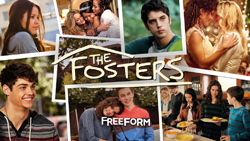 The Fosters
The Fosters
The family at the center of The Fosters may be one of the most diverse of any TV show to date. Stef and Lena Foster, an interracial lesbian couple, are the parents of Stef’s biological son, Brandon, and two children adopted at older ages, Jesus and Mariana. As the series begins, they have just become foster parents to teenaged Callie and her younger biological brother, Jude. Stef and Lena later adopt Callie and Jude.
Though some have criticized the show as bordering on fairytale, it’s engaging, gives good insight into the characters’ feelings, and gets a lot of things right about foster children and families. When Callie moves in, she shares a room with Mariana. Callie struggles to trust her, but Mariana understands, “Why should you trust me? I’m just the latest girl you’ve been forced to share a room with. I remember what that was like, being passed around all the time. I don’t think I ever felt safe until I got here. It took me a long time to trust anybody. So I get it.”
Discussion Questions for The Fosters
- What does it feel like for Mariana to have a new foster child come into their home?
- What do you imagine it feels like for Callie to be new to the home? What questions and hopes do you think she might have?
- What can a family do to better prepare for a foster child coming into their family? What can they do to make the transition easier for the foster child?
